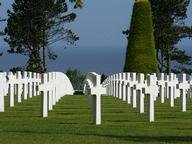Quiz Answer Key and Fun Facts
1. Leon Trotsky is assassinated in Mexico
2. Orson Welles' "Citizen Kane" is released
3. Enrico Fermi achieves nuclear chain reaction
4. A human-generated famine causes the death of over one million people in Bengal
5. Bretton Woods Conference creates International Monetary Fund
6. ENIAC, widely regarded as the first electronic computer, is completed
7. Italy abolishes the monarchy
8. Chuck Yeager breaks the sound barrier
9. The first Summer Olympics since 1936 are held in London
10. George Orwell's "Nineteen Eighty-Four" is published
Source: Author
LadyNym
This quiz was reviewed by FunTrivia editor
trident before going online.
Any errors found in FunTrivia content are routinely corrected through our feedback system.
